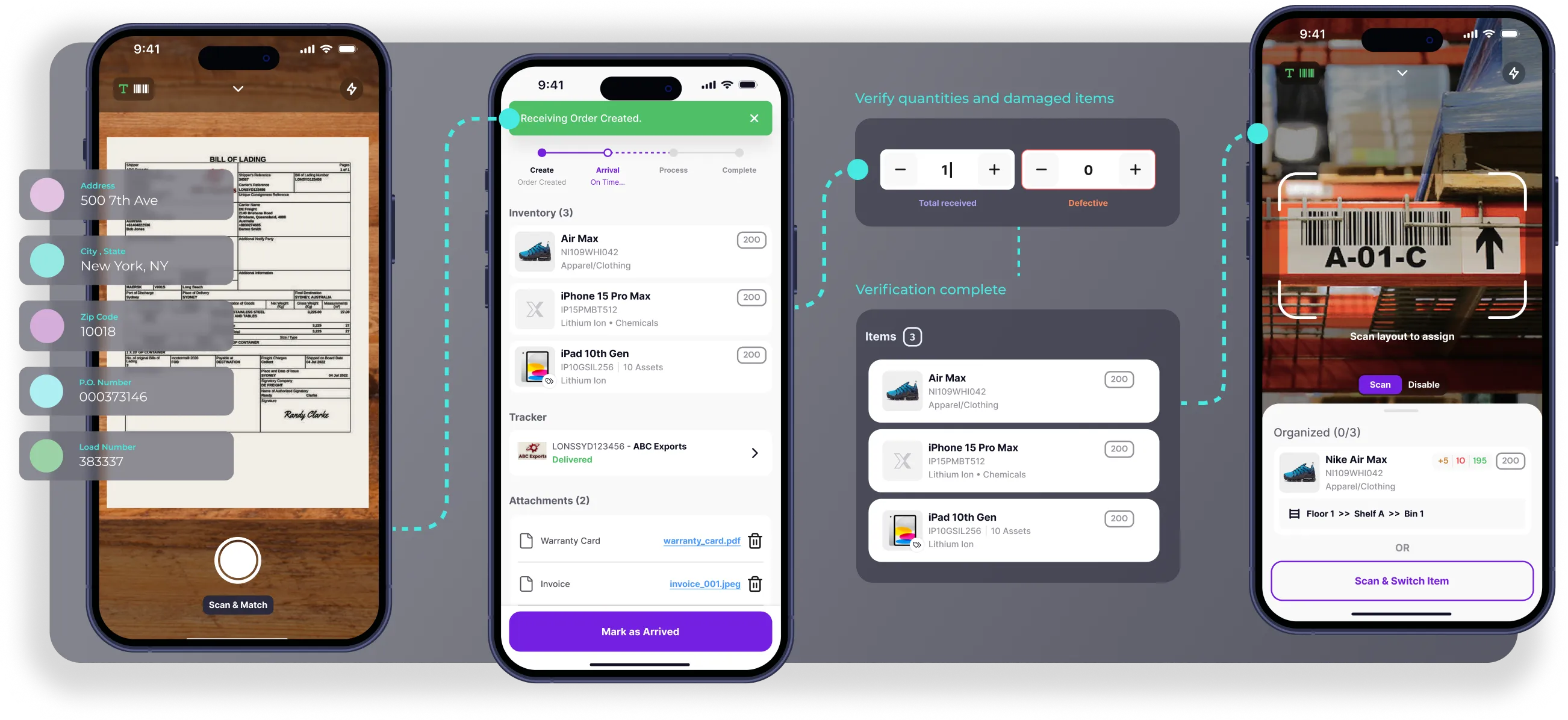Vision AI Scanning in Logistics | A Complete Guide
The logistics industry is at a breaking point. Shipment volumes are hitting record highs, yet many operations are still bottlenecked by technology that hasn't changed in decades.
Our mobile application automates inventory receiving, returns and asset management with AI scanning and intuitive workflows.


Capture every bit of data on the label (even RMA) and visual inspection with AI scanning.
Automatically match data collected to existing records, display errors when required fields are missing, and sync to other systems.


Transform your manifest or bill of lading into an inbound purchase order. Easily check against quantities received and ensure accuracy.
Eliminate manual data entry, mistakes, and disconnects – automatically update inventory levels.
Replace manual shipping and returns label processes with AI-powered data extraction.
Extract data from bill of lading documents with superior accuracy.
Easily scan, track, and manage your inventory with OCR scanning capabilities.
Reduce mistakes by automating box, pallet, and item counting, dimensioning, and damage detection.


Warehouse receiving is the initial stage of replenishing inventory in a warehouse. Efficient warehousing receiving translates to timely order delivery to customers. It includes receiving shipments, unloading goods, and storing them within the warehouse or fulfillment center for distribution.
A warehouse receiver manages the intake of items in a warehouse or store backroom. There, the shipments are inspected, sorted, and either stored in the warehouse or stocked on shelves. They also maintain accurate records and match invoices to verify that orders are correct.
The warehouse inventory cycle is the process of periodically counting inventory within a warehouse for accuracy and proper stock management.
The traditional barcode system assigns each item a label with details such as its description, location, and price. These labels are scanned using barcode scanners, for quick tracking of items. As they move in and out of the warehouse, inventory levels are automatically updated.
Start by evaluating your current warehouse processes thoroughly to pinpoint areas where automation could boost efficiency. Then, develop clear and structured processes for your automated systems. During the planning stage, regular inventory audits are important to verify the accuracy of new data generated by automation against your existing records.